10 Key Elements Every Flooring Contract Must Include
Discover essential elements for a successful flooring contract to protect your business and clients.

Introduction
Navigating the complexities of flooring contracts can be daunting for both contractors and clients. A well-crafted contract not only safeguards the interests of both parties but also ensures smooth project execution. This article explores ten essential elements that every flooring contract must include, shedding light on how these components enhance clarity, prevent disputes, and foster trust.
What happens when critical elements are overlooked? The consequences can lead to misunderstandings and costly delays. It’s crucial for flooring professionals to grasp and implement these key contract components effectively. By doing so, they can avoid pitfalls and ensure a successful project outcome.
Service Buddy: Streamline Your Flooring Contract Management
Service Buddy provides a robust platform that revolutionizes the management of surface agreements. By centralizing quoting, job oversight, and customer communication, flooring professionals can effortlessly access all elements of their agreements. This streamlined approach not only saves valuable time but also significantly reduces the risk of errors, allowing businesses to focus on delivering exceptional service to their clients.
As Maya Angelou wisely noted, "People will forget what you said, people will forget what you did. But individuals will always remember how you influenced their emotions." This highlights the critical role of efficient communication in managing agreements. Furthermore, integrating advanced software solutions empowers businesses in the flooring industry to handle agreements effectively, leading to increased productivity and enhanced client satisfaction.
Consider this: firms that have adopted centralized agreement management tools report a remarkable boost in operational efficiency and a notable decrease in agreement-related errors. To implement centralized agreement management successfully, flooring business owners should prioritize:
- Educating their teams on the platform's features
- Regularly evaluating their agreement processes to identify areas for improvement
Are you ready to elevate your operational efficiency and client satisfaction?

Key Components of a Flooring Installation Contract
A flooring contract must encompass several essential components to ensure clarity and protection for both parties involved. These components include:
- Clear Description of Work: A detailed outline of the tasks to be performed is crucial. This includes specifying the type of flooring contract, the total square footage, and any preparatory work required. Vague language can lead to misunderstandings, so specificity is key.
- Materials Specification: Clearly stating the materials to be used in the flooring contract, including brand and style, helps align expectations and ensures compliance with warranties. This detail is vital for both project integrity and customer satisfaction.
- Project Timelines: Establishing a timeline with start and end dates, along with key milestones, is essential to avoid delays and manage customer expectations. Realistic timelines promote trust and loyalty, as they help prevent customer disappointment.
- Payment Terms: Clearly defined payment schedules in the flooring contract, including due dates and methods, help protect against late payments and ensure smooth financial transactions. A detailed breakdown of expenses, including materials and labor, improves transparency and enables customers to comprehend where their money is allocated.
- Warranty Information: Including warranty details for both materials and workmanship in the flooring contract provides clients with peace of mind, ensuring their investment is protected. Clear terms regarding what is covered and for how long are essential to avoid disputes.
- Legal Considerations: It is important to meticulously design flooring contracts to avoid unenforceable terms, ensuring that all legal aspects are addressed to protect both parties.
- Compliance with Local Regulations: The flooring contract must adhere to local building codes and licensing laws to prevent legal issues and project delays.
- Use of Tools for Organization: Utilizing tools like Floorzap can simplify contract oversight, making it easier to keep track of terms and documentation.
- Flexibility and Adjustments: Allowing space for minor modifications in project management cultivates goodwill among customers and aids in preserving positive relationships.
Incorporating these elements into the flooring contract not only protects the interests of both parties but also enhances the professionalism of the trade. Successful agreements are defined by clarity, comprehensive documentation, and compliance with local building codes and regulations, which further reduce risks and improve client relationships.
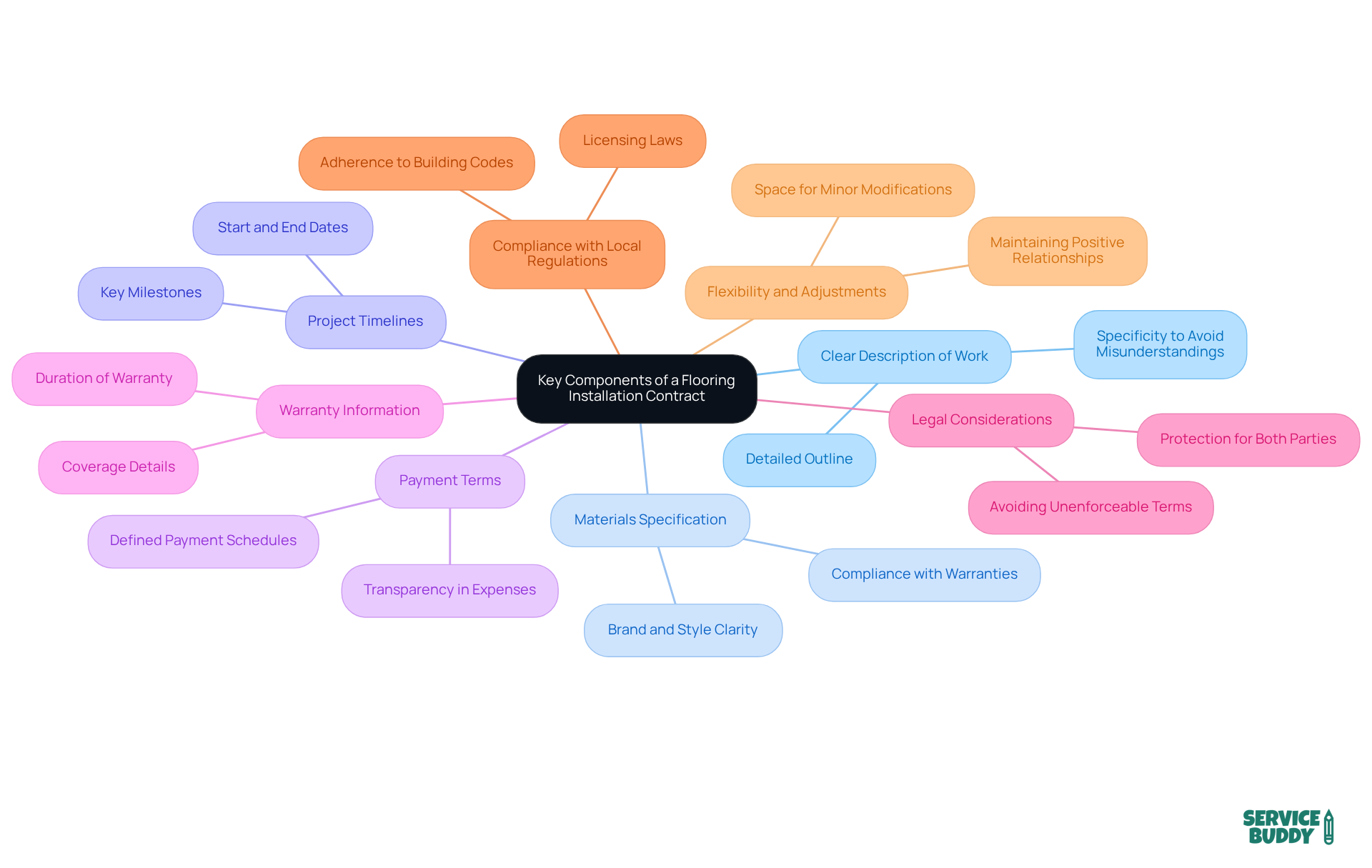
Payment Terms: Securing Financial Stability
Defining payment terms in a flooring contract is not just important—it's essential. Clearly specifying the total cost, deposit requirements, payment schedule, and acceptable payment methods sets the stage for a successful transaction. By establishing these terms upfront, flooring professionals can significantly reduce the risk of late payments. This proactive approach leads to a smoother financial transaction process, ensuring that both parties are on the same page from the start.
Have you considered how much easier your operations could be with clear payment guidelines? By taking the time to outline these details, you not only protect your business but also foster trust with your clients. Remember, clarity in payment terms is a key step toward operational efficiency and financial stability.

Timeline for Completion: Managing Expectations
Incorporating a timeline for project completion in the agreement is not just beneficial; it’s essential. This timeline should clearly outline the start date, key milestones, and the expected completion date. Why is this important? It provides both the contractor and the customer with a clear understanding of the project duration, which is crucial for managing expectations and planning effectively.
When both parties are aligned on the timeline, it minimizes misunderstandings and fosters a collaborative environment. This clarity helps in anticipating challenges and adjusting plans as necessary. Ultimately, a well-defined timeline not only enhances communication but also drives project success. So, make sure to include this critical element in your agreements.
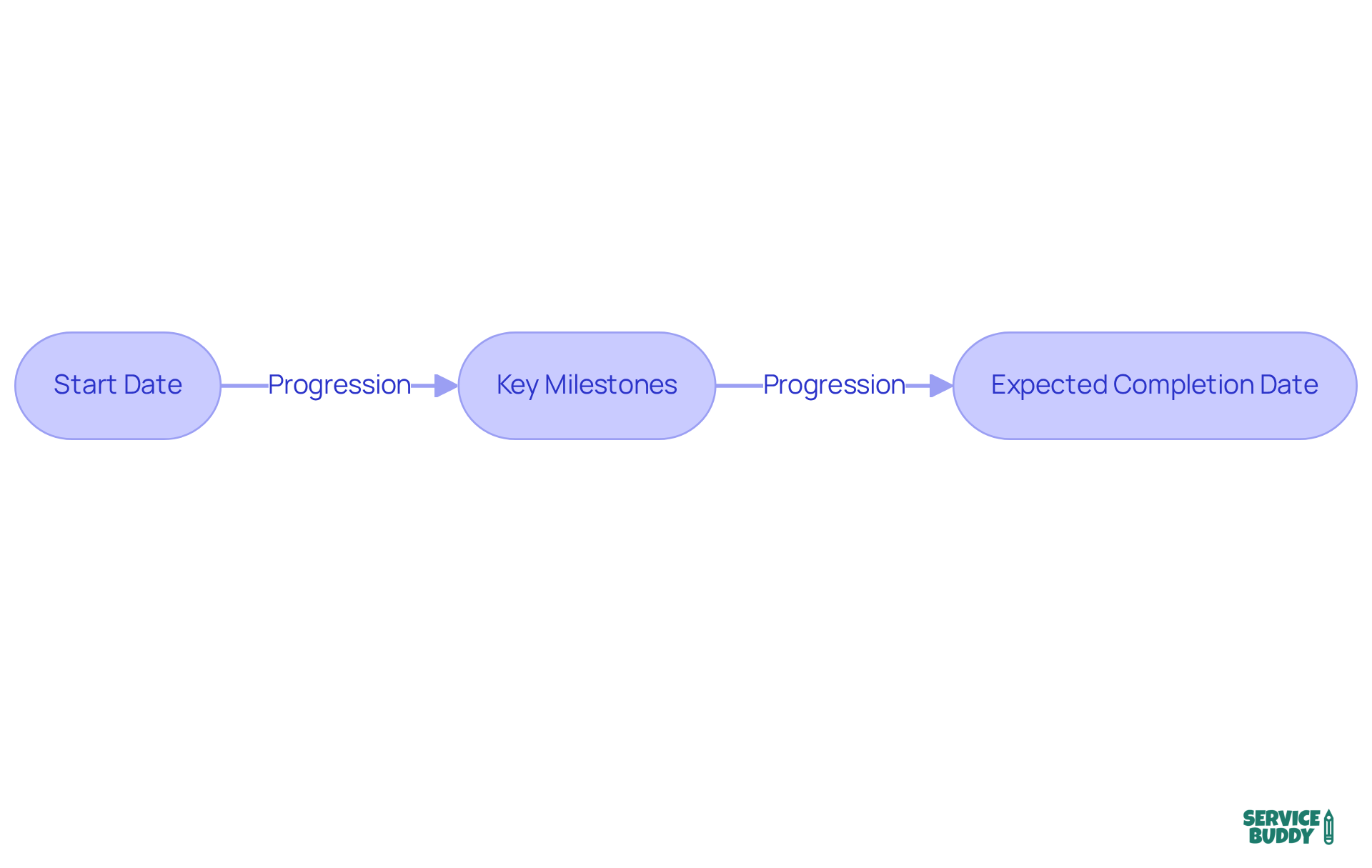
Warranty Details: Protecting Your Business and Clients
A flooring contract must clearly outline the details of the warranty. This includes the duration of the warranty, what it covers, and the process for claiming warranty services. Such transparency not only protects the contractor from potential disputes but also instills confidence in customers regarding the quality of the work performed.
By ensuring that warranty information is explicit in the flooring contract, flooring business owners can reduce misunderstandings and build trust. After all, a well-defined warranty serves as a testament to the contractor's commitment to quality and customer satisfaction.
Consider this: how often do disputes arise from vague warranty terms? By addressing these details upfront, you can significantly reduce the likelihood of conflicts and enhance your reputation in the industry.
In conclusion, a comprehensive warranty outline in the flooring contract is not just a formality; it’s a strategic move that benefits both parties involved.
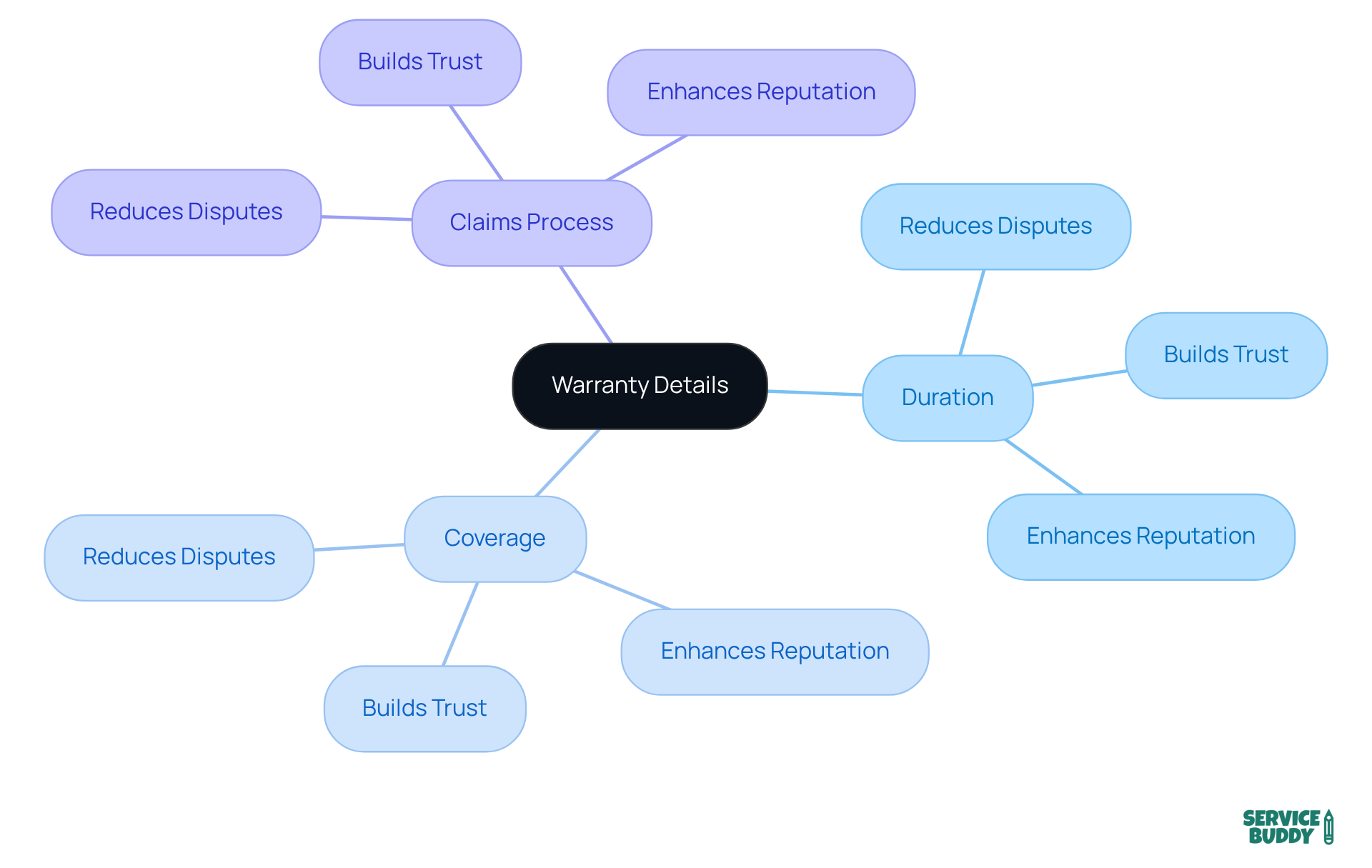
Change Order Process: Managing Modifications Effectively
A comprehensive flooring contract change order procedure is essential for managing alterations to any flooring project effectively. This procedure should clearly outline how changes are requested, approved, and documented, along with any associated costs. By establishing such a framework, flooring professionals can respond to customer requests efficiently within the flooring contract, ensuring that project integrity remains intact.
Consider this: how often do projects face delays due to unclear change management processes? By implementing a structured approach, you not only streamline operations but also enhance client satisfaction. This proactive measure can significantly reduce misunderstandings and disputes, fostering a more collaborative environment.
Incorporating a well-defined change order procedure not only safeguards your project’s timeline but also reinforces your credibility in the industry. Flooring business owners who prioritize the terms of their flooring contract are better equipped to handle the inevitable changes that arise, ultimately leading to more successful project outcomes.
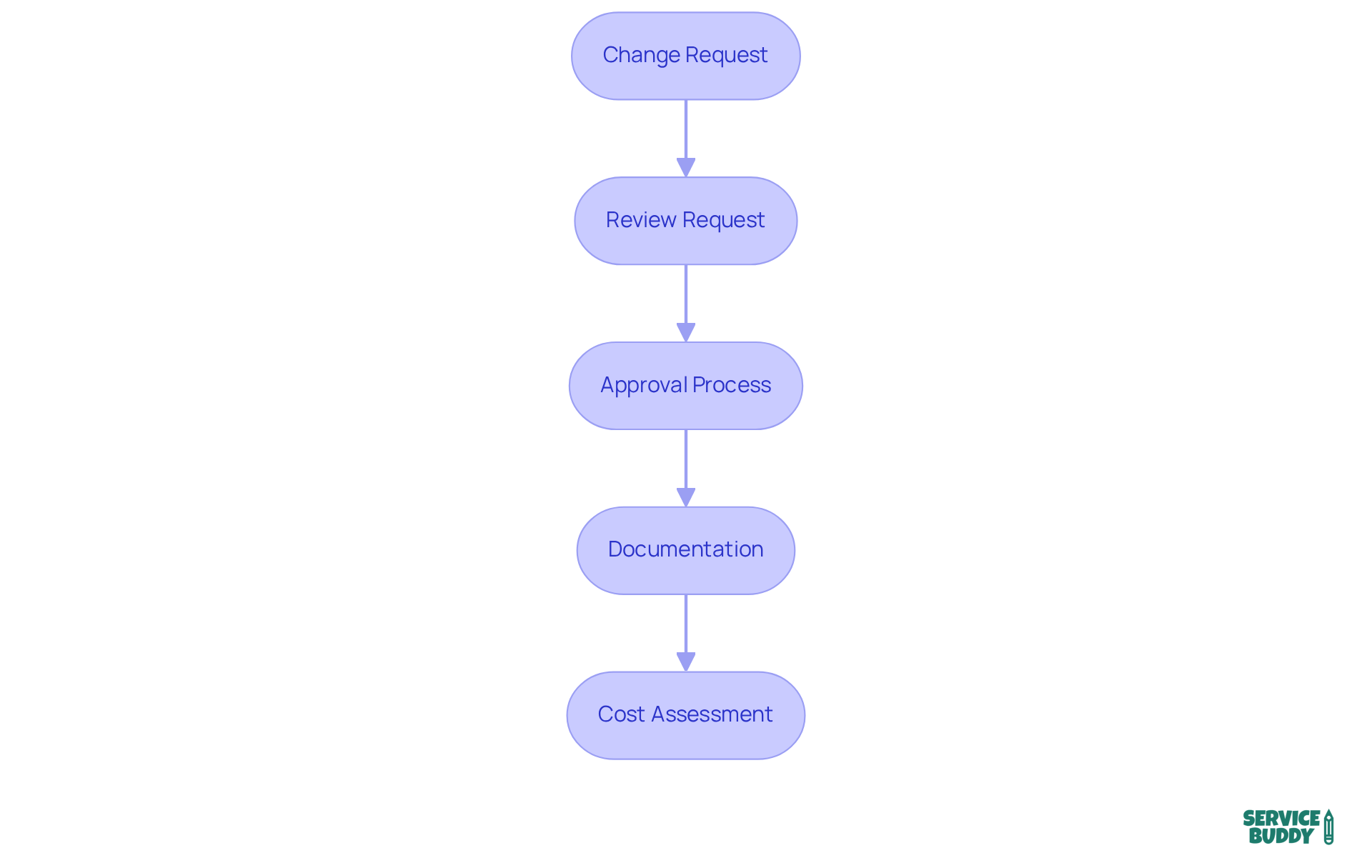
Dispute Resolution Clause: Ensuring Conflict Management
A well-drafted dispute resolution clause is essential for any flooring business. It should clearly specify the methods for resolving conflicts, such as mediation or arbitration, and outline the jurisdiction where disputes will be handled. By taking this proactive approach, you can avoid lengthy legal battles that drain resources and time. Instead, you foster a more amicable resolution process that benefits all parties involved.
Consider this: how much could your business save by resolving disputes efficiently? A clear dispute resolution strategy not only protects your interests but also enhances your reputation in the industry. Flooring business owners who prioritize these clauses often find themselves navigating conflicts with greater ease and confidence.
Incorporating these elements into your contracts is not just a legal formality; it’s a strategic move that can lead to smoother operations and stronger relationships with clients and partners. Don’t wait for conflicts to arise—act now to ensure your business is prepared.
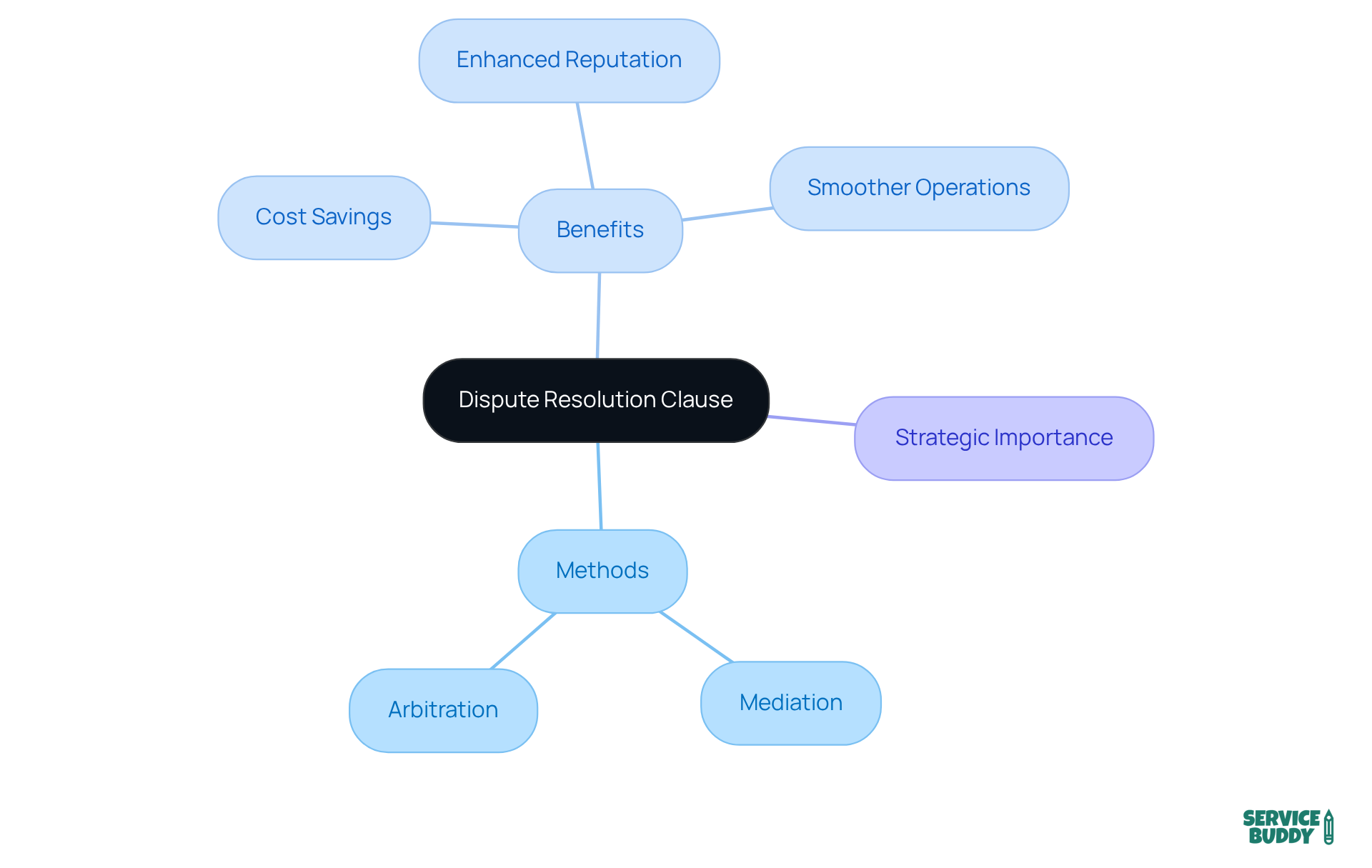
Liability Clause: Protecting Against Unforeseen Issues
Incorporating a liability clause in your flooring contract is not just advisable; it’s essential. This clause clearly outlines the responsibilities of each party in the event of unforeseen issues, such as property damage or accidents. By defining liability, you not only protect your interests but also those of your clients, safeguarding against potential legal complications.
Consider this: without a well-defined liability clause, you could face significant risks that might jeopardize your business. Industry professionals understand that clarity in agreements is crucial. It fosters trust and ensures that everyone knows their responsibilities, which can prevent disputes down the line.
Ultimately, taking the time to include a liability clause can save you from headaches later. It’s a proactive step that demonstrates your commitment to professionalism and accountability in your flooring contract work. Don’t leave your business vulnerable—ensure your agreements are comprehensive and clear.
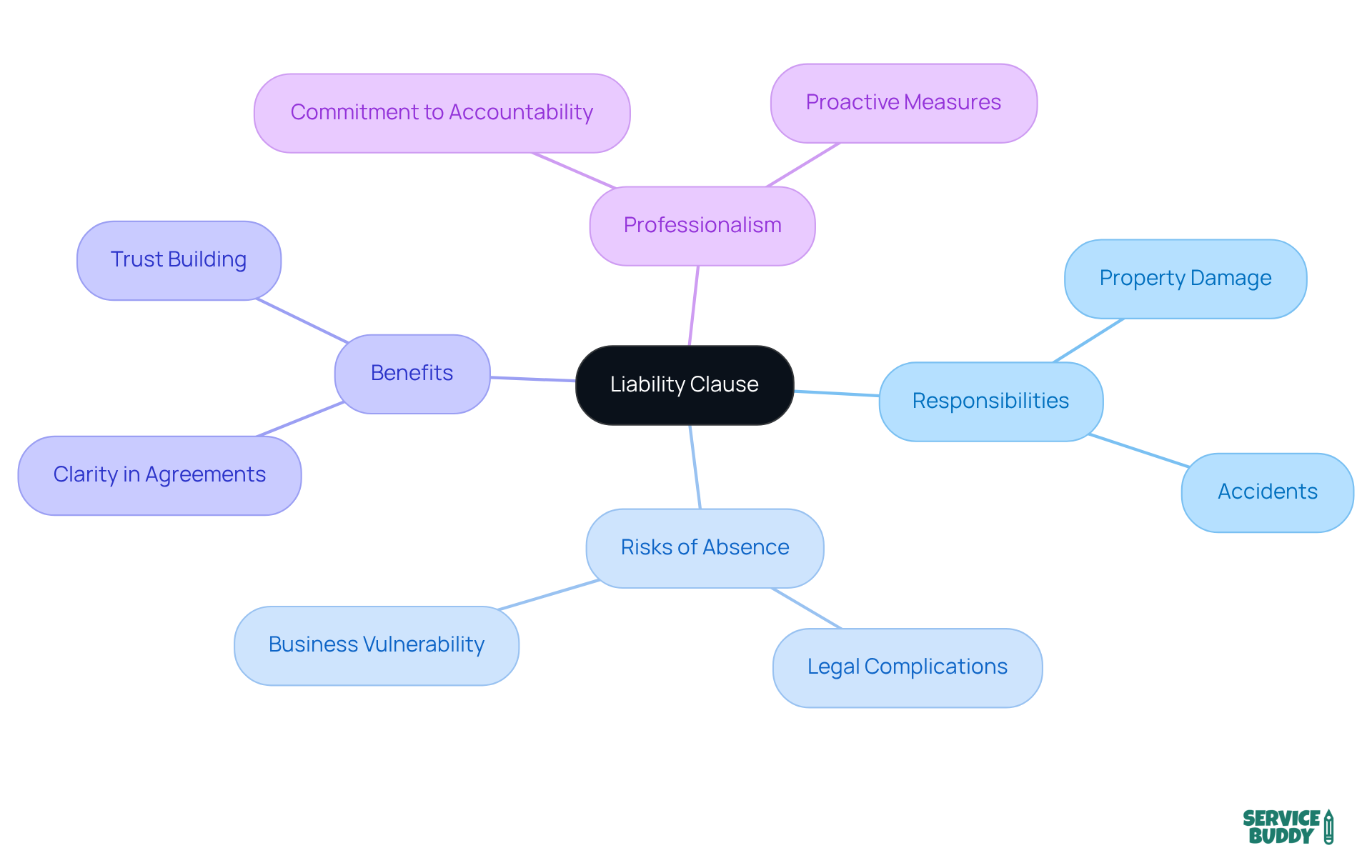
Common Mistakes to Avoid in a Flooring Contract
Frequent errors in flooring contracts often arise from unclear task descriptions, insufficient payment conditions, and the absence of a change order procedure. Flooring experts must recognize these pitfalls. By ensuring that every element of the agreement is clearly defined and accepted, they can prevent misunderstandings that could jeopardize their interests.
Consider this: how many projects have faced delays or disputes due to vague terms? By addressing these issues upfront, flooring professionals not only safeguard their operations but also enhance their credibility with clients by establishing a flooring contract.
Incorporating a well-structured agreement is not just a formality; it’s a strategic move that can lead to smoother project execution and greater client satisfaction. Take action now to refine your agreements and protect your business.

Legal Considerations for Flooring Contracts: Ensuring Compliance
Flooring professionals must recognize the critical legal considerations when drafting contracts. Compliance with local laws and regulations is not just a formality; it’s essential for safeguarding your business. This includes understanding licensing requirements, consumer protection laws, and industry-specific regulations. By ensuring compliance, you not only protect your business but also foster trust with your clients.
Consider this: how well do you understand the legal landscape affecting your operations? Many flooring business owners overlook these details, which can lead to costly mistakes. By prioritizing legal compliance, you position your business as a trustworthy partner in the eyes of your clients.
Incorporating these legal insights into your contracts can significantly enhance your credibility. Remember, a well-informed business is a successful one. Take the time to educate yourself on these regulations, and you’ll see the benefits reflected in your client relationships.

Conclusion
A well-structured flooring contract isn’t just a formality; it’s the backbone of a successful flooring project. By incorporating essential elements—like clear descriptions of work, material specifications, project timelines, payment terms, warranty information, and legal considerations—flooring professionals can safeguard their interests and build trust with clients. Each component plays a critical role in ensuring clarity, reducing misunderstandings, and enhancing overall project management.
The significance of these key elements cannot be overstated. Establishing payment terms secures financial stability, while outlining a change order process effectively manages modifications. Each aspect contributes to a smoother workflow. Moreover, addressing dispute resolution and liability clauses protects both parties from unforeseen issues, fostering a more harmonious working relationship.
Ultimately, comprehensive flooring contracts are vital. By prioritizing clarity and compliance, flooring professionals not only protect their businesses but also elevate client satisfaction. It’s imperative to take proactive steps in refining agreements and embracing effective contract management practices. This commitment to excellence enhances operational efficiency and solidifies a reputation as a trustworthy partner in the flooring industry.
Frequently Asked Questions
What is Service Buddy and how does it benefit flooring professionals?
Service Buddy is a platform designed to streamline the management of surface agreements for flooring professionals. It centralizes quoting, job oversight, and customer communication, saving time and reducing errors, which allows businesses to focus on providing exceptional service.
What are the key components of a flooring installation contract?
A flooring installation contract should include the following components: a clear description of work, materials specification, project timelines, payment terms, warranty information, legal considerations, compliance with local regulations, the use of organizational tools, and flexibility for adjustments.
Why is it important to have a clear description of work in a flooring contract?
A clear description of work outlines the tasks to be performed, specifies the type of flooring contract, total square footage, and any preparatory work required. This specificity helps prevent misunderstandings and ensures both parties have aligned expectations.
How should payment terms be structured in a flooring contract?
Payment terms should clearly specify the total cost, deposit requirements, payment schedule, and acceptable payment methods. This clarity helps reduce the risk of late payments and ensures smooth financial transactions between parties.
What role does warranty information play in a flooring contract?
Warranty information provides clients with peace of mind by ensuring their investment is protected. It should clearly outline what is covered and for how long, which helps avoid disputes and builds trust.
Why is compliance with local regulations important in a flooring contract?
Compliance with local building codes and licensing laws is crucial to prevent legal issues and project delays. Ensuring that contracts adhere to these regulations protects both parties involved.
How can tools like Floorzap assist in managing flooring contracts?
Tools like Floorzap can simplify contract oversight by making it easier to keep track of terms and documentation, enhancing organization and efficiency in managing agreements.
What is the significance of flexibility and adjustments in project management?
Allowing for minor modifications in project management fosters goodwill among customers and helps maintain positive relationships, contributing to overall client satisfaction.
List of Sources
- Service Buddy: Streamline Your Flooring Contract Management
- 10 Quotes for successful Procurement and Contract Management (https://georgevrakas.com/2014/02/27/10-quotes-for-successful-procurement-and-contract-management)
- Key Components of a Flooring Installation Contract
- nextfloorsllc.com (https://nextfloorsllc.com/blog-post19)
- floorzap.com (https://floorzap.com/blog/flooring-installation-contract)
- wagnermeters.com (https://wagnermeters.com/moisture-meters/wood-info/5-things-when-quoting-flooring-job)
- Common Mistakes to Avoid in a Flooring Contract
- fcnews.net (https://fcnews.net/2025/07/commercial-stats-market-challenges-impact-contract-recovery)
- ibisworld.com (https://ibisworld.com/united-states/industry/flooring-installers/196)
See Service Buddy in action with a live demo
Everything you need to run your flooring business, Service Buddy is your all-in-one management platform.



.svg)
